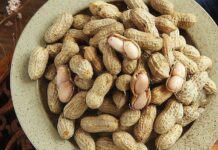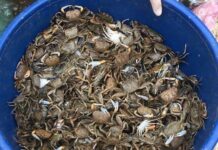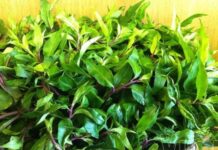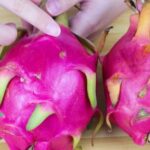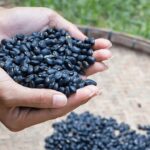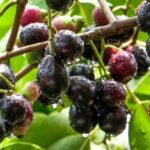
Scientifically known as Dioscorea bulbifera L., this perennial climbing plant from the Dioscoreaceae family thrives with minimal care and offers remarkable health benefits.
Native to Asia and Africa, this wild-growing vine, often found in mountainous forests or near cultivated fields, features soft, twining stems, heart-shaped leaves, and a unique characteristic – tubers that grow directly on the stem. When these tubers touch the ground, they take root and grow into new plants, making propagation incredibly easy and rapid.
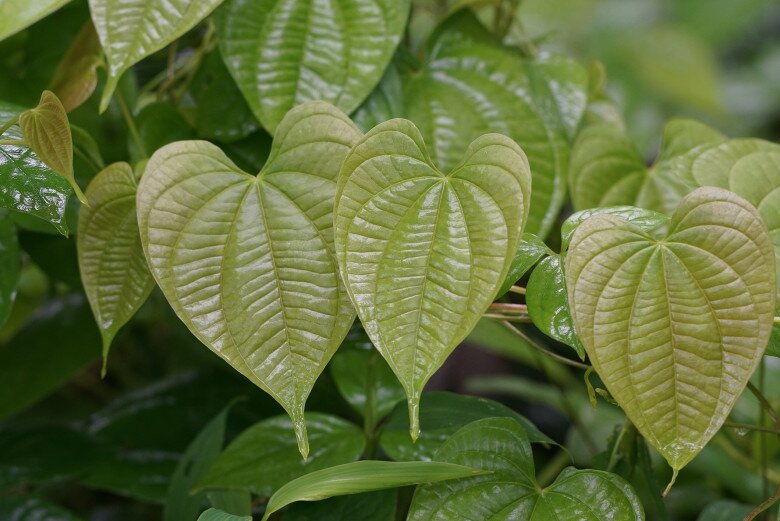
Leaves of the air potato plant.
While the tubers contain mild toxins, thorough washing and repeated boiling eliminate them entirely, making them safe for consumption like other root vegetables. The processed flour from these tubers, rich in nutrients, can be used similarly to cereal or rice flour.
Nutritionally, air potatoes are packed with vitamin C, B vitamins, iron, zinc, and various minerals. These nutrients bolster the immune system, enhance blood circulation, strengthen resistance, and prevent illnesses.

Furthermore, air potatoes are considered more effective as a laxative than sweet potatoes and more nutritious than taro. Their high fiber content stimulates bowel movements, aiding constipation relief. The folic acid in the tubers is particularly beneficial for pregnant women, supporting fetal development.
In traditional Eastern medicine, air potatoes are valued similarly to Chinese yam, known for nourishing the lungs, spleen, kidneys, heart, and blood vessels. They also alleviate coughs, soothe asthma, and detoxify the body. Regular consumption during winter strengthens the lungs, kidneys, spleen, and stomach, enhances digestion, and improves overall health.
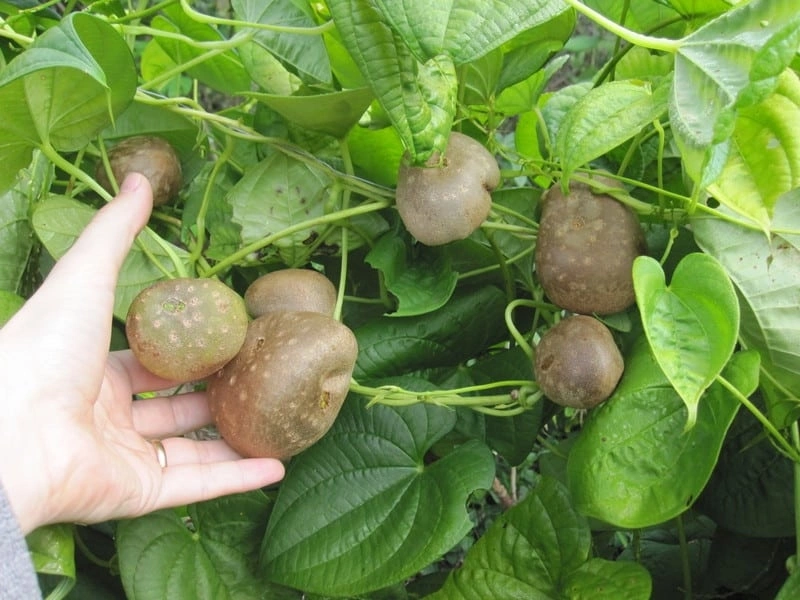
Growing and Caring for Air Potatoes at Home
This fast-growing plant thrives in various climates. Propagation is best done during the growing season using tubers. Plant the tubers in well-drained, loose soil in a warm, sunny location for optimal germination and growth.

For successful home cultivation, consider these care tips:
– Soil:
Air potatoes adapt to various soil types, provided they are well-drained. Suitable options include loamy soil mixed with sand, sandy soil, or clay soil.
For garden or pot cultivation, use regular garden soil mixed with perlite to enhance drainage. Avoid waterlogging, as it can cause root rot and plant death.
– Light:
This sun-loving plant thrives outdoors in full sunlight. It also tolerates partial shade, making it suitable for planting under large trees.

– Watering:
Air potatoes require minimal water. Watering every three days is sufficient, and they can withstand drought for up to a week. Water only when the topsoil is dry to prevent root rot from overwatering.
– Fertilization: Use a balanced 10-10-10 NPK fertilizer every 4–6 weeks during the growing season for robust growth.
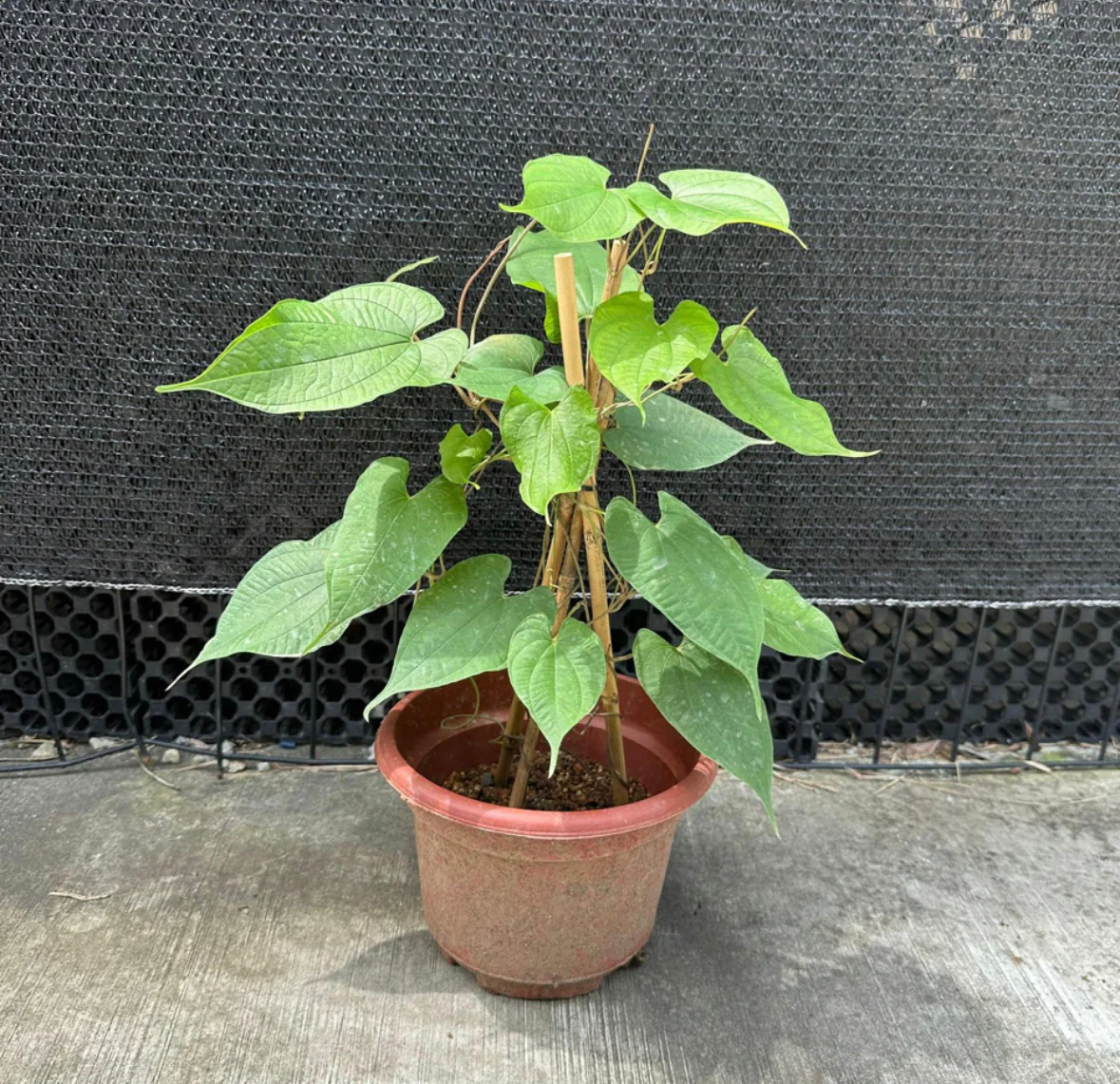
“Dragon Fruit Shopping Tip: Look for This Sign to Ensure Freshness and Safety”
Uncover the secret to selecting the perfect dragon fruit, straight from the experts. Seasoned dragon fruit farmers and trusted vendors reveal a single telltale sign that guarantees your fruit is free from preservatives and growth hormones. With this insider knowledge, you can shop with confidence, knowing you’re getting the freshest, healthiest dragon fruit every time.
“Sip 2 Cups of Black Bean Tea Before Meals: Shed Pounds, Reduce Hair Fall, Enhance Skin, and Stay Youthful”
Unlock radiant skin, a slimmer figure, and vibrant health with a secret weapon that’s been hiding in plain sight: black beans. Far from an expensive cosmetic, this humble, heaven-sent superfood is a powerhouse of beauty and wellness benefits that few truly know about. Whether you simmer it into a refreshing summer drink or simply savor its rich flavor, black beans offer a treasure trove of advantages that go beyond quenching your thirst. Discover the natural path to glowing skin, effortless weight management, and overall vitality—all in one unassuming package.
Forest Fruit Once a Childhood Snack Now Sells at Premium Prices in Urban Markets, Attracting Crowds Despite Higher Costs
Nestled in the lush mountains of Western Vietnam, the wild elderberry, known locally as *trâm rừng*, *trâm mốc*, or *vối rừng*, thrives in its natural habitat. This resilient tree, perfectly adapted to the highland climate, requires no cultivation or irrigation. Yet, each season, it bursts into a spectacle of delicate white blossoms, eventually yielding clusters of dark, juicy berries. A true gift of the forest, its effortless beauty and bounty have captivated the region for generations.














